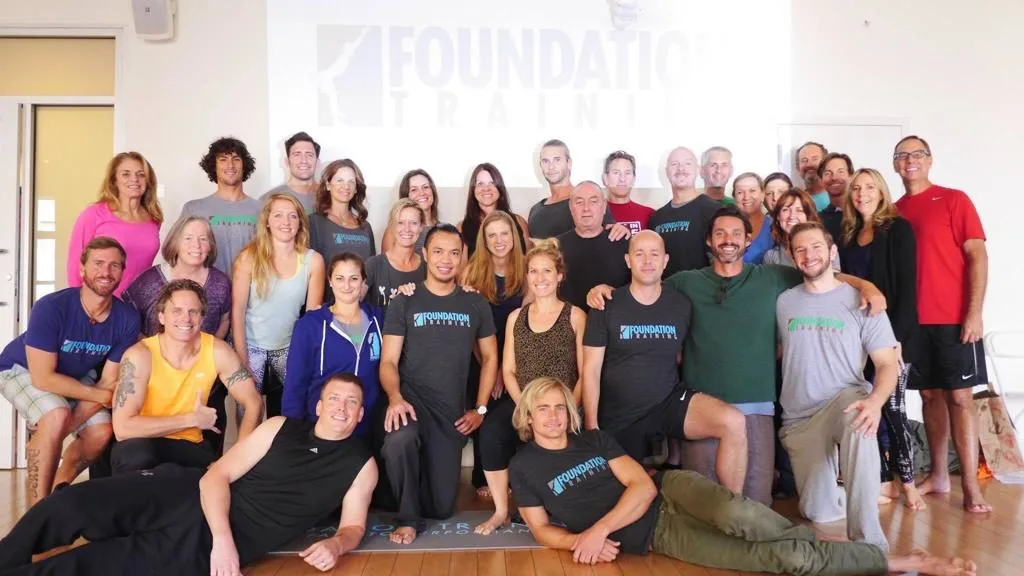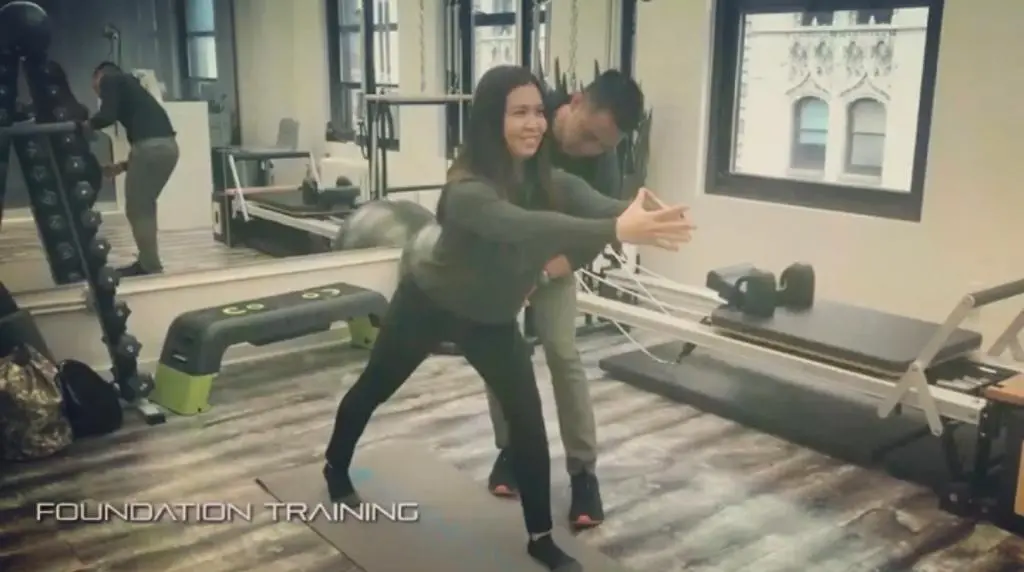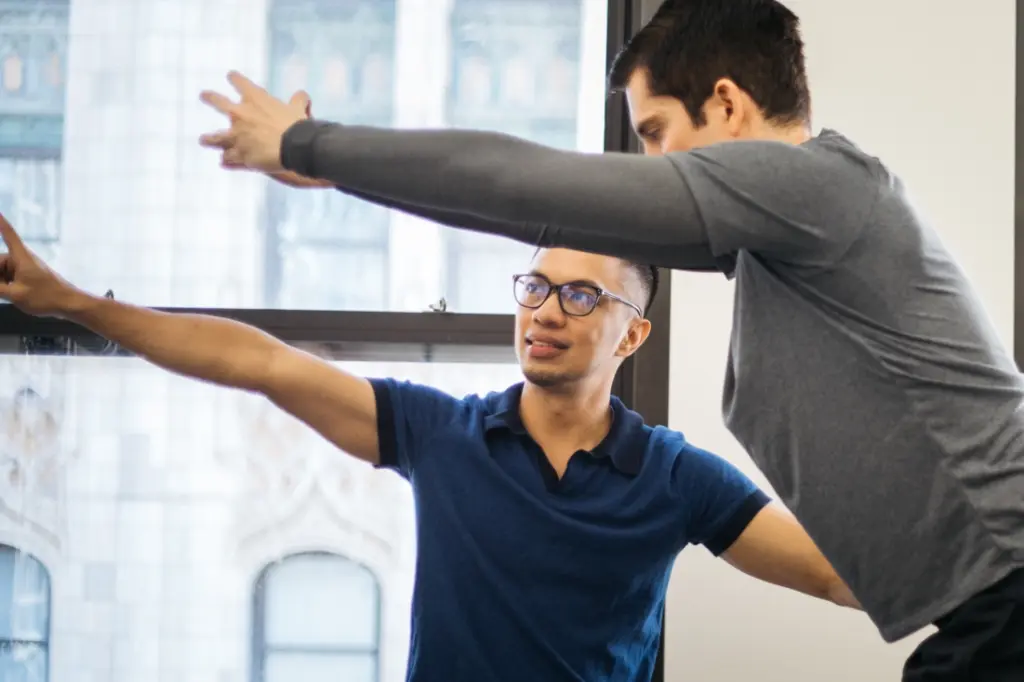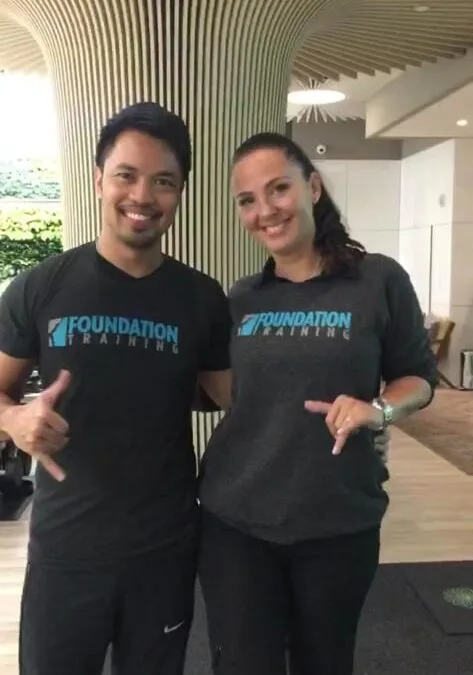Foundation Training – The strength of a human body lies on its foundation. The main purpose of the foundation is to hold our body’s structure and keep it upright. Well-built foundations keep it strong and healthy. However, we are now living in the 21st century where normal day typically involve activities that causes pain, deterioration and inefficiency of our body. Activities such as hunching over keyboards, bending over phone devices, commuting for hours huddled over steering wheels or even slouching out on the couch watching our favorite shows. These activities cause our bodies to break down and weaken important core stability.
That’s why (FT) Foundation Training is now sweeping the nation! Foundation Training’s birth was due to Dr. Eric Goodman’s belief that corrective movement could be the answer to his back pain and give him his mobility, health, and life back. It is designed to rewire poor patterns that affect our core stability. It uses a series of isometric poses, postures and breathing exercises to strengthen and elongate the body’s core, activate the posterior muscle chain and decompress the spine. It involves simple movement patterns and is equipment free, creating maximum power, flexibility, and endurance.

So what are the key principles of Foundation Training (FT)?
Decompression – Decompression breathing, if done well, acts as a pulley system to increase tension on the posterior chain. Decompression breathing is used during each FT exercise to re-educate the axial skeleton to use the pulley systems around the ribcage to lengthen and decompress the torso and awaken the deep muscles of the core needed to pull upwards against gravity. This new norm allows your spine to be much more decompressed and stable. Proper breathing produces a visible effect on the body, opening and rotating limbs.

Anchoring – The muscles of the pelvis, glutes, hamstrings, adductors, and iliacus help to create an equal downward pull on the pelvis, or an anchor. To create space and tension that supports the entire body, we must have something to pull upward from or against. We need an anchor in order to keep our posture expansive.
Integration and Hip Hinging – When practicing FT it is never the intent to isolate a muscle. Each exercise re-educates the body on proper integration or sharing of muscular work, and each muscle plays an important role. While some play a bigger role than others, they never act alone. When the workload is shared this eliminates the potential for one muscle to become overactive, tight, or dysfunctional. Hip hinging is an effective way to teach all the muscles of the posterior chain to work in conjunction with one another to perform the same task. It is the foundation of proper movement.

Foundation Training 5
How will you incorporate foundation training into your everyday life?
When you find yourself sitting at your desk, commuting or eating at a table you may do the SEATED DECOMPRESSION exercise: Slide toward the end of your chair and sit as tall as you can. Bring the ankles directly under the front of your knees and squeeze your feet and knees together. Sit as tall as you can, squeeze your knees, and take several forceful decompression breaths. Bring the arms up at chest height into a sphere of tension (as shown above). Take another decompression breaths and repeat as needed.
When you find yourself brushing your teeth, waiting in line, watering your garden or shopping you may do the FOUNDER exercise: Stand with your legs wider than shoulder width and the outside edges of the feet parallel to each other. Bring hands to measuring stick hand position – thumbs on the bottom of the rib cage and little finger on the top of the hips. Anchor the lower body by grabbing the ground with your feet and pulling your weight back into your heels. Take a decompression breath, increasing the distance between your little fingers and thumbs. Pull your hips back behind your heels. Keep your spine stable and your knees unlocked. Bring your arms to your side with your thumbs turned away from your body in long wing arm position. Continue decompression breathing.
When you find yourself doing chores such as vacuuming, ironing, raking leaves, sweeping or moving laundry you may do the INTEGRATED HINGES & ANCHORING exercise: Begin in a strong, standing decompression position with your feet about shoulder width apart and the outside lines of your feet parallel. Shift the weight into your heels, grab the ground with your feet (anchor) and take a big decompression breath, expanding and elevating your entire rib cage away from the centre of your body. Right away bring your arms into the long wing arm position by externally rotating the shoulders, extending your arms by your sides with your thumbs reaching away from your body and your elbows pulling back behind you. From this decompressed, standing position begin to hinge at the hips as you scoop your arms forward in front of you with your palms up and bring them into a sphere of tension in front of your chest. In this position feel the increased tension along the backside of the body and the inner line of the leg. Release this tension like a spring unloading as your hips come back to the centre and you return to a tall standing position. Repeat this motion while working hard to stay decompressed by maintaining the anchor in your lower body and continuing to elevate and expand the ribcage through decompression breathing.
Founder is a unique movement that focuses on the biggest joint in your body – your hips. Your hips act as your body’s center hinge. But with today’s lifestyle, we don’t learn how to properly use our hips to hinge as they were designed to work. Instead, we’re hunching our backs or using other muscles that bring on pain. That’s why the Founder is so important to learn because it’s a pain-relieving secret that your body has simply forgotten.
Foundation Training 3
FYI: Our Co-Founders, Drs. Kristian Marcial and Monica Saliu, took the Foundation certification courses and have been incorporating Foundation Training with their therapeutic and wellness treatments. Most of their patients benefited from this unique approach has avoided unnecessary surgeries, learned proper body mechanics and developed efficient exercise routine to start, break and end their daily activities. Do you trust our Co-Founders to teach you the Founder? Get it?
When you find yourself doing chores such as vacuuming, ironing, raking leaves, sweeping or moving laundry you may do the INTEGRATED HINGES & ANCHORING exercise: Begin in a strong, standing decompression position with your feet about shoulder width apart and the outside lines of your feet parallel. Shift the weight into your heels, grab the ground with your feet (anchor) and take a big decompression breath, expanding and elevating your entire ribcage away from the centre of your body. Right away bring your arms into the long wing arm position by externally rotating the shoulders, extending your arms by your sides with your thumbs reaching away from your body and your elbows pulling back behind you. From this decompressed, standing position begin to hinge at the hips as you scoop your arms forward in front of you with your palms up and bring them into a sphere of tension in front of your chest. In this position feel the increased tension along the backside of the body and the inner line of the leg. Release this tension like a spring unloading as your hips come back to the centre and you return to a tall standing position. Repeat this motion 8-10 times while working hard to stay decompressed by maintain the anchor in your lower body and continuing to elevate and expand the ribcage through decompression breathing.
If you’re suffering from back pain, recovering from an injury, or doubt there is an answer for you, Tribeca Physical Therapy is officially reopened for in-person physical therapy sessions and continues to offer Telehealth PT or Virtual PT. Call us at 2124068080 or message us and book your first session free.



